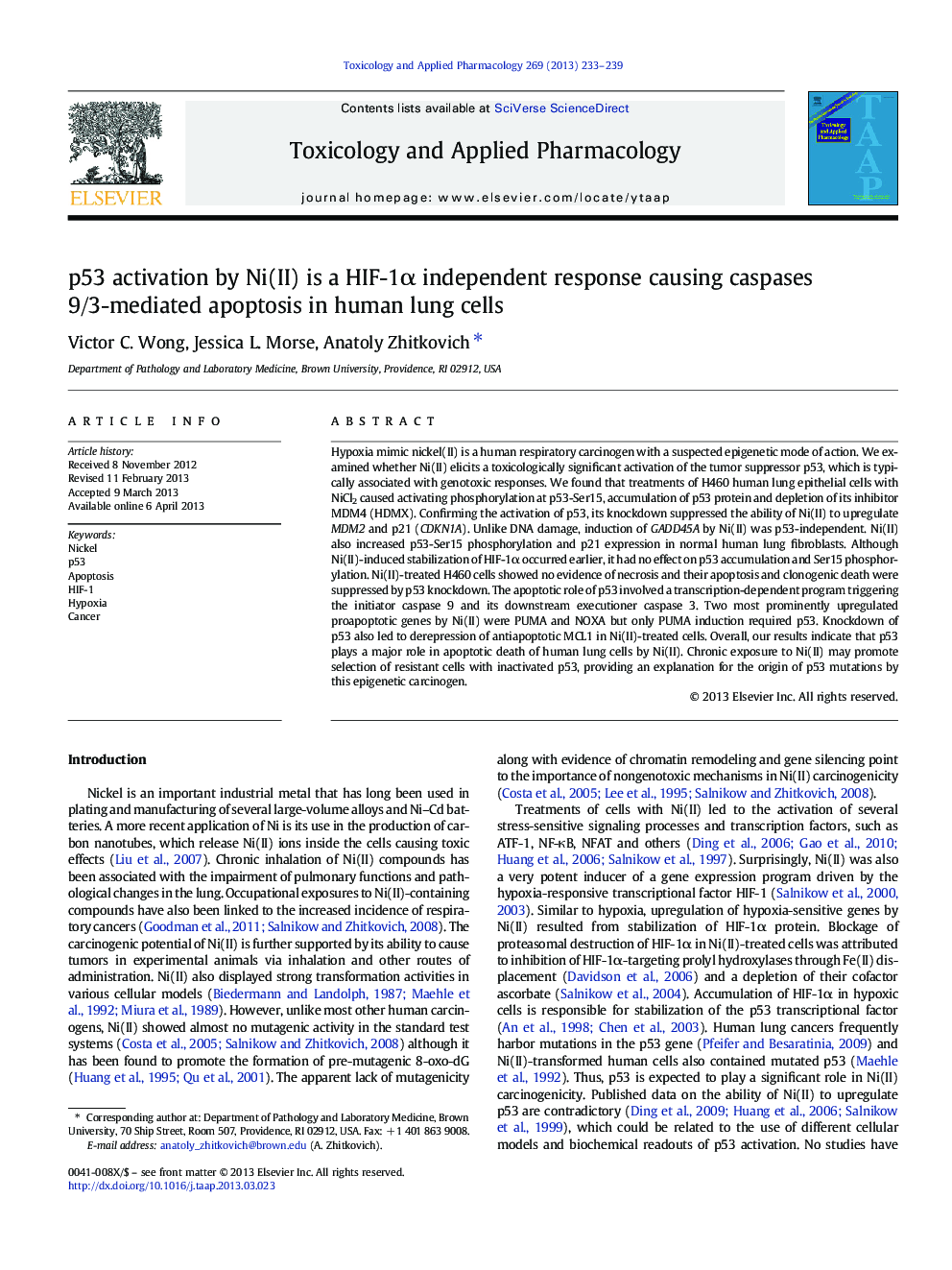| کد مقاله | کد نشریه | سال انتشار | مقاله انگلیسی | نسخه تمام متن |
|---|---|---|---|---|
| 5846429 | 1128481 | 2013 | 7 صفحه PDF | دانلود رایگان |
عنوان انگلیسی مقاله ISI
p53 activation by Ni(II) is a HIF-1α independent response causing caspases 9/3-mediated apoptosis in human lung cells
دانلود مقاله + سفارش ترجمه
دانلود مقاله ISI انگلیسی
رایگان برای ایرانیان
موضوعات مرتبط
علوم زیستی و بیوفناوری
علوم محیط زیست
بهداشت، سم شناسی و جهش زایی
پیش نمایش صفحه اول مقاله

چکیده انگلیسی
Hypoxia mimic nickel(II) is a human respiratory carcinogen with a suspected epigenetic mode of action. We examined whether Ni(II) elicits a toxicologically significant activation of the tumor suppressor p53, which is typically associated with genotoxic responses. We found that treatments of H460 human lung epithelial cells with NiCl2 caused activating phosphorylation at p53-Ser15, accumulation of p53 protein and depletion of its inhibitor MDM4 (HDMX). Confirming the activation of p53, its knockdown suppressed the ability of Ni(II) to upregulate MDM2 and p21 (CDKN1A). Unlike DNA damage, induction of GADD45A by Ni(II) was p53-independent. Ni(II) also increased p53-Ser15 phosphorylation and p21 expression in normal human lung fibroblasts. Although Ni(II)-induced stabilization of HIF-1α occurred earlier, it had no effect on p53 accumulation and Ser15 phosphorylation. Ni(II)-treated H460 cells showed no evidence of necrosis and their apoptosis and clonogenic death were suppressed by p53 knockdown. The apoptotic role of p53 involved a transcription-dependent program triggering the initiator caspase 9 and its downstream executioner caspase 3. Two most prominently upregulated proapoptotic genes by Ni(II) were PUMA and NOXA but only PUMA induction required p53. Knockdown of p53 also led to derepression of antiapoptotic MCL1 in Ni(II)-treated cells. Overall, our results indicate that p53 plays a major role in apoptotic death of human lung cells by Ni(II). Chronic exposure to Ni(II) may promote selection of resistant cells with inactivated p53, providing an explanation for the origin of p53 mutations by this epigenetic carcinogen.
ناشر
Database: Elsevier - ScienceDirect (ساینس دایرکت)
Journal: Toxicology and Applied Pharmacology - Volume 269, Issue 3, 15 June 2013, Pages 233-239
Journal: Toxicology and Applied Pharmacology - Volume 269, Issue 3, 15 June 2013, Pages 233-239
نویسندگان
Victor C. Wong, Jessica L. Morse, Anatoly Zhitkovich,